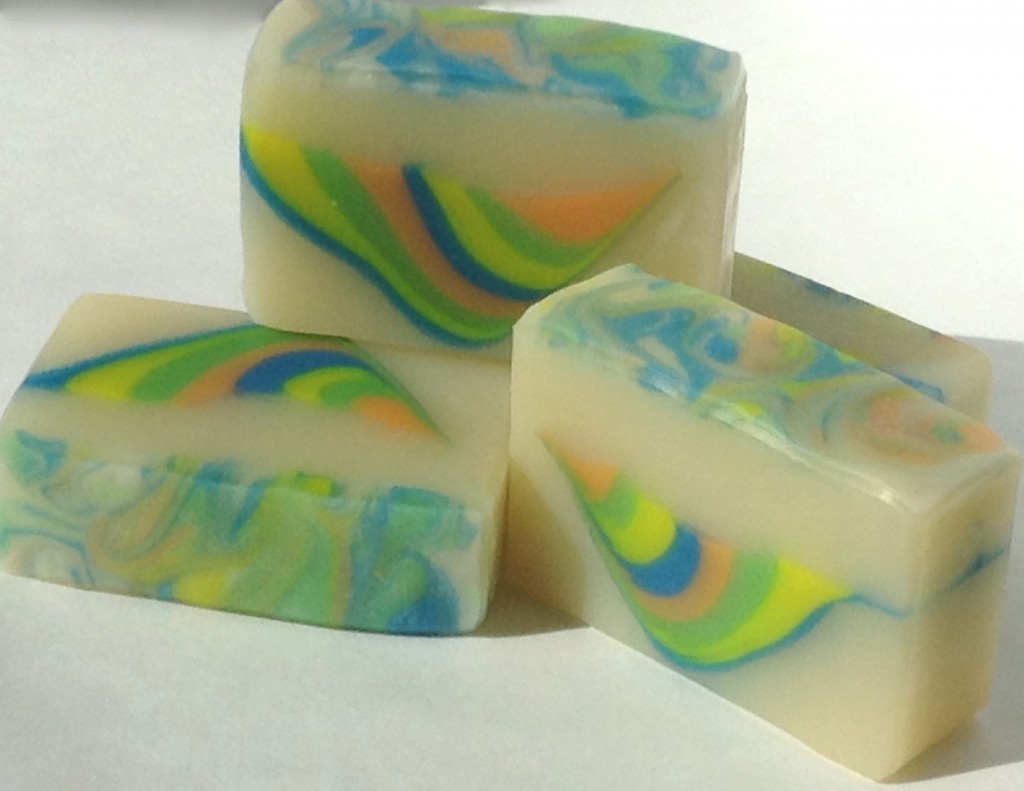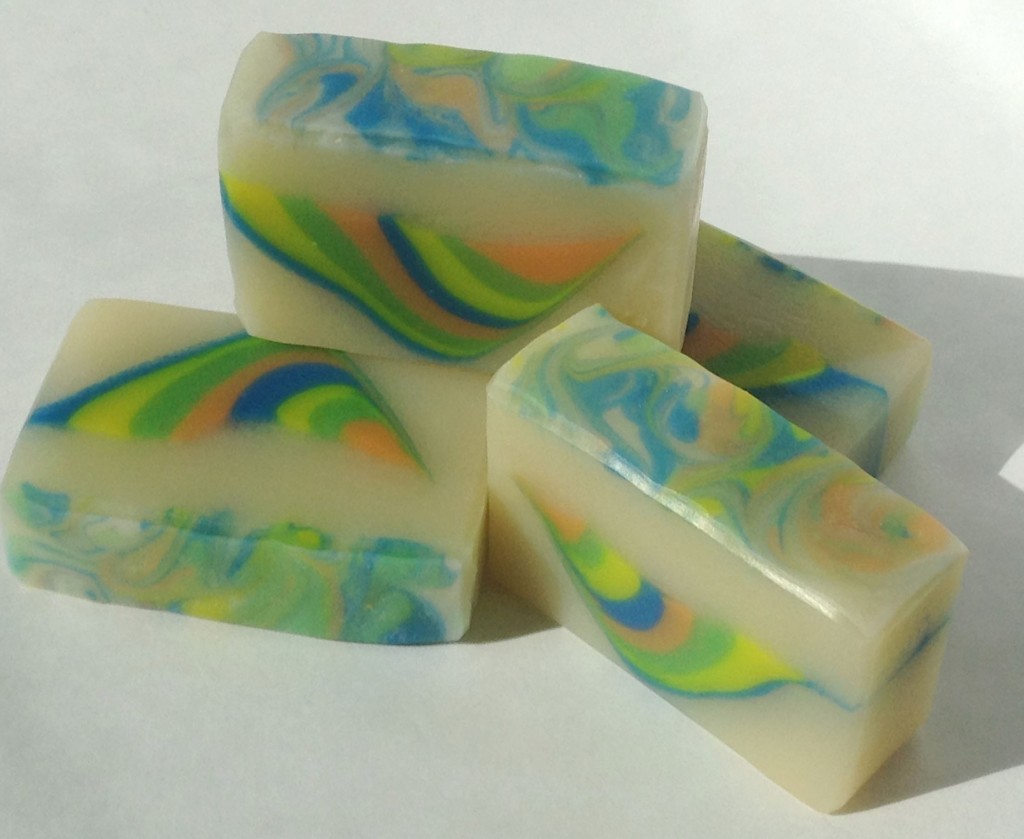This month’s Soap Challenge Club challenge soap is the Dandelion Zebra Swirl created by Vinvela Ebony and described on her blog Dandelion Seifee. Here is my contribution to the challenge:
The recipe I used to create the soap is a slow-moving recipe modified from one recommended by Amy Warden of Great Cake Soapworks:
- 60% olive oil
- 25% coconut oil
- 10% sunflower oil
- 5% castor oil
The resulting soap should be extremely conditioning and great for sensitive skin. I used a Bramble Berry fragrance called Kumquat to scent the soap, and it smells absolutely divine—very fruity and fresh.
I left my soap base uncolored. The sunflower oil does contribute some sort of lightening effect to the soap base. I have noticed when I’ve used it before that the resulting soap has a lighter color than if I didn’t use it at all. However, because sunflower oil makes for a softer soap, it is best not to use too much in a recipe—perhaps no more than 20-25%. Sunflower oil also contributes to a nice, creamy lather.
Typically, I use kaolin clay in my soap, but I am not sure what effect clay might have on speeding up trace, and because I wanted a nice fluid soap for this technique, I left it out.
I mixed my oils and lye at a low temperature—below 90°F. I pulsed my stick blender a few times, mixing just until my oils and lye were emulsified. The colorants I used were neon pigments rather than oxides, as I just recently learned oxides can also speed up trace. I used two pigments from Brambleberry: Tangerine Wow and Fizzy Lemonade. The other two pigments were from TKB: Reformulated Neon Green and Reformulated Neon Blue.
As you can see, the colors are nice and bold, and though the soap base isn’t white, it’s a very pretty light natural shade.
Because of the high amount of soft oils, the soap is definitely softer than my typical soaps; however, I know from experience that high olive oil soaps can become quite hard with a longer cure time.
It’s such an interesting technique. I think I would do it again with some different colors.
Trying this technique gave me some ideas should I decide I want to try the Peacock Swirl again, too. I was able to maintain soap of the consistency I think might be required for the Peacock Swirl when I made this Dandelion Zebra Swirl soap. I think the trick might be to avoid oxides (if I can) for the Peacock Swirl, as it seemed to work great for this soap. Thanks to Amy Warden for teaching me something I didn’t know about oxides!
Here is a last look at the soap from a different angle. I am happy with the swirl on the top, too!



